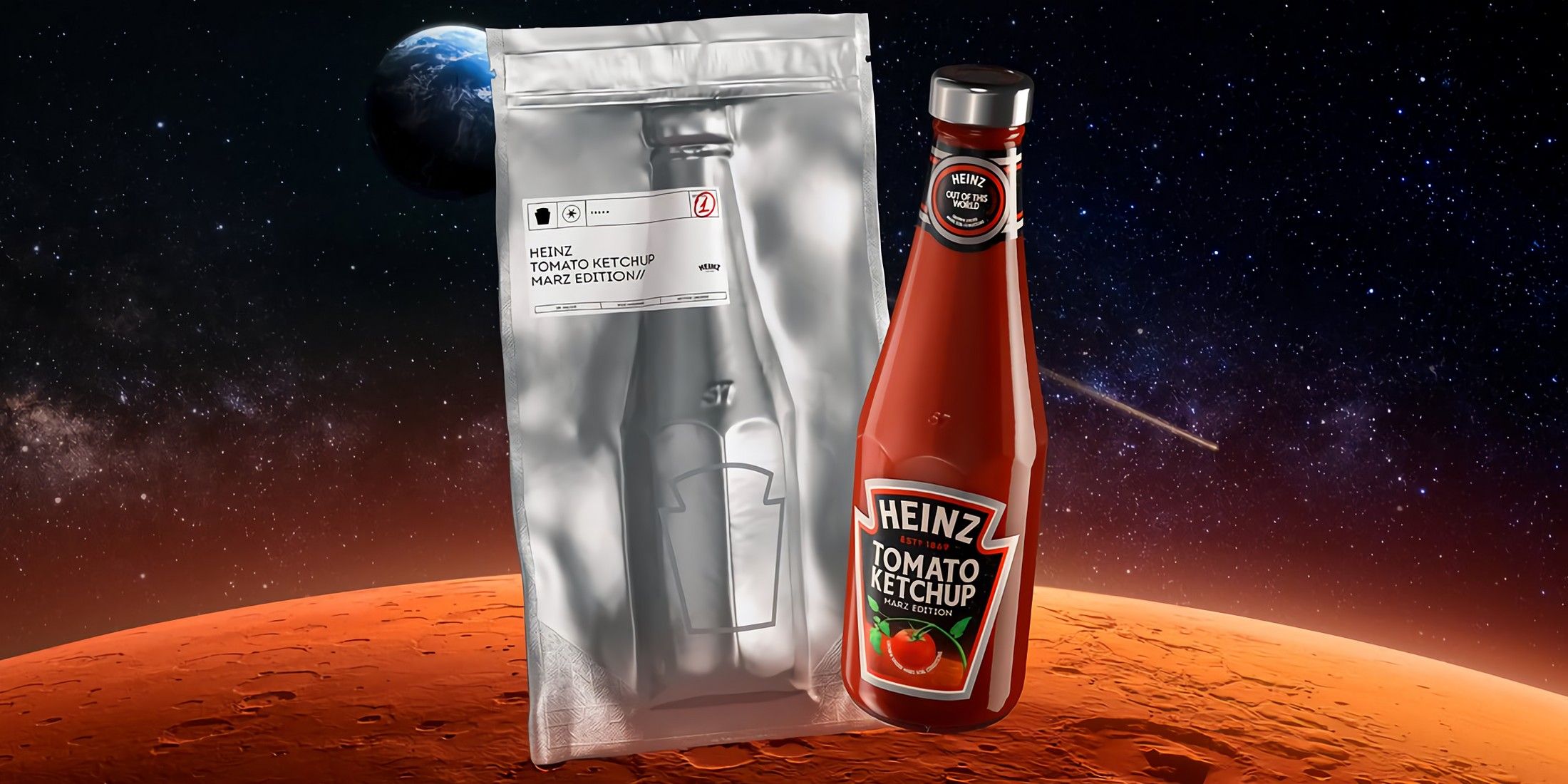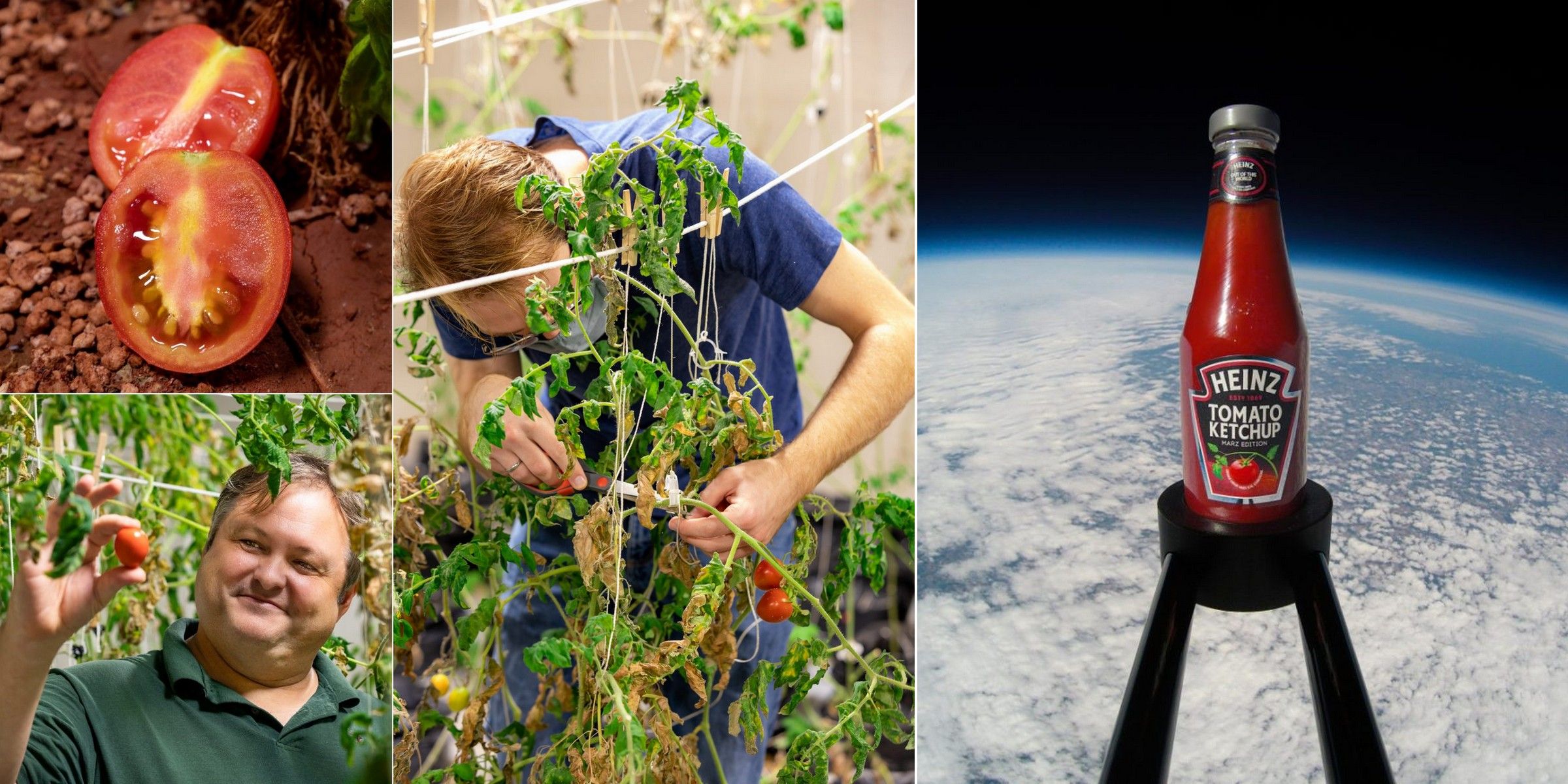American food products giant Heinz has collaborated with astrobiologists to create special Marz Edition ketchup made from tomatoes grown in Mars-like conditions, paving the way for research in food production in space ahead of planned missions to Mars and beyond. One of the biggest problems that astronauts currently face is food availability, especially for long exploration missions. Some progress has already been made in the field of astrobiology, but scaling them up for a long-term mission on bodies like the Moon or other planets is still a challenge.
As of now, astronauts have successfully harvested edible items such as lettuce, Chinese cabbage, mizuna mustard, red Russian kale, and zinnia flowers on the International Space Station. And earlier this month, the folks living on the station had a Taco party after growing green chile pepper in space. Then there is water, whose presence has been confirmed in antiquity, but harvesting the precious liquid for future missions remains an unsolved problem. However, it appears that Mars astronauts will at least be able to enjoy some ketchup on the Red Planet.
Heinz collaborated with astrobiology experts at the Florida Institute of Technology's Aldrin Space Institute to grow tomatoes in harsh conditions simulating the climate and soil of Mars. They made a special ketchup from the fruit, which is often misclassified as a berry. But there is some bad news in tow. Only a small group of people from within the company will be able to taste the very badly named "Heinz Tomato Ketchup Marz Edition," and it is unlikely that it will ever be mass-produced due to the low yield of tomatoes in the harsh simulated Martian conditions. The "unique prototype condiment" is the fruit of two years' worth of research into the challenges that astronauts have to tackle regarding food production on Mars.
A Peek Into The Future Or Martian Food Production
The tomatoes were grown in a greenhouse called Red House with powerful LED lighting as the only source of photonic energy instead of sunlight and approximately 7,800 pounds of soil from the Mojave Desert that somewhat resembles the regolith on the neighboring planet. The temperature inside Red House was strictly regulated, and a tight irrigation pattern was followed during the whole growth phase. The team initially grew 30 plants as part of the pilot phase and then expanded to a crop of 450 tomato plants grown in separate buckets. Heinz cherry-picked four varieties of tomato seeds, of which only two proved to be capable of surviving in the Martian conditions.
Astrobiologist Andrew Palmer, who was at the helm of the experiment, noted that the project helped explore the possibilities of long-term food production beyond Earth. However, there are a few pressing challenges that still need to be solved. He added that the best way forward would be growing different types of vegetables and fruit in a trough system instead of individual crop harvest. Doing so would ensure that the variety of microbial partners that develop in the soil is diverse, which would ultimately prove to be beneficial for long-term harvesting goals. Palmer adds that the project is still in its infancy, but it's just a matter of time before the key limitations are figured out. To mark the achievement, Heinz sent a limited-edition bottle on a space tour that soared up to 23 miles into the sky, survived extreme temperatures of around minus 94 degrees Fahrenheit and then returned to tell the tale.
Source: Florida Institute Of Technology


